What does consolidation mean for South Bend? Community reacts to school closure proposals
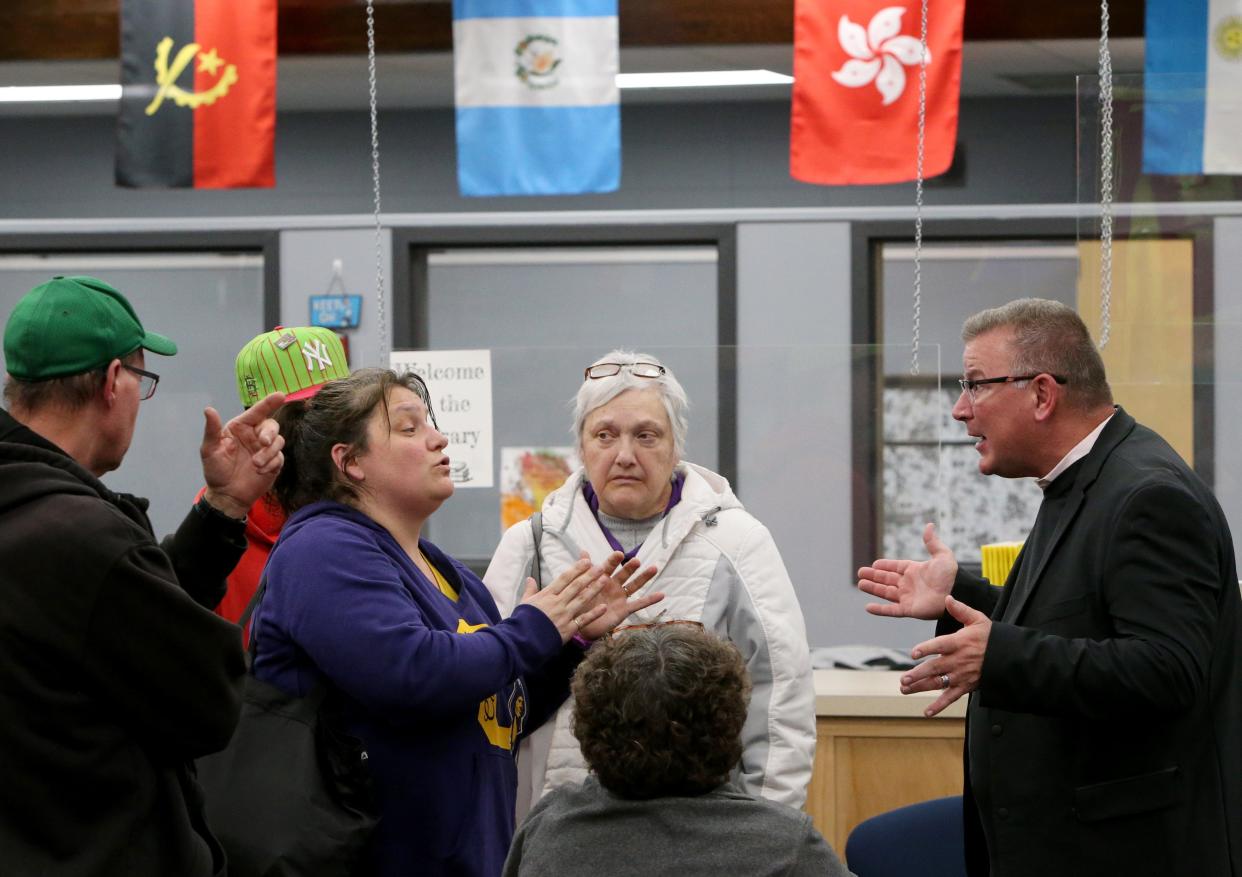
Editor's note: The Tribune wants to hear from you. What are your thoughts on consolidation in South Bend schools? Share your feedback in a short survey here.
SOUTH BEND — Michael Huffman is a senior at Clay High School. His family went to Clay High School and, after college, Huffman said, he wants to send his own kids to Clay High School.
The small, community feel of South Bend’s north side programs brought him back to the district he grew up in after three years in Mishawaka schools.
Consolidation:Could South Bend close schools? Here's what's being discussed.
“This corporation has done nothing but good things for me and my family,” Huffman said. “I want my kids to go through this corporation. … I want them to have a better life. I want them to experience some of the things I did.”
But, recent ideas pitched for school consolidation have cast doubt on the future of the high school and the delivery of certain speciality programs offered across the district.
Huffman, who takes industrial arts classes at the north side high school, said he would like to see the district invest more in building up successful programs rather than closing schools down.
“We have three bays in our auto shop,” Huffman said. “It is very small and it is only open to Clay High School. I know people who want to get in there from different schools and we can’t because the district is shutting us down.”
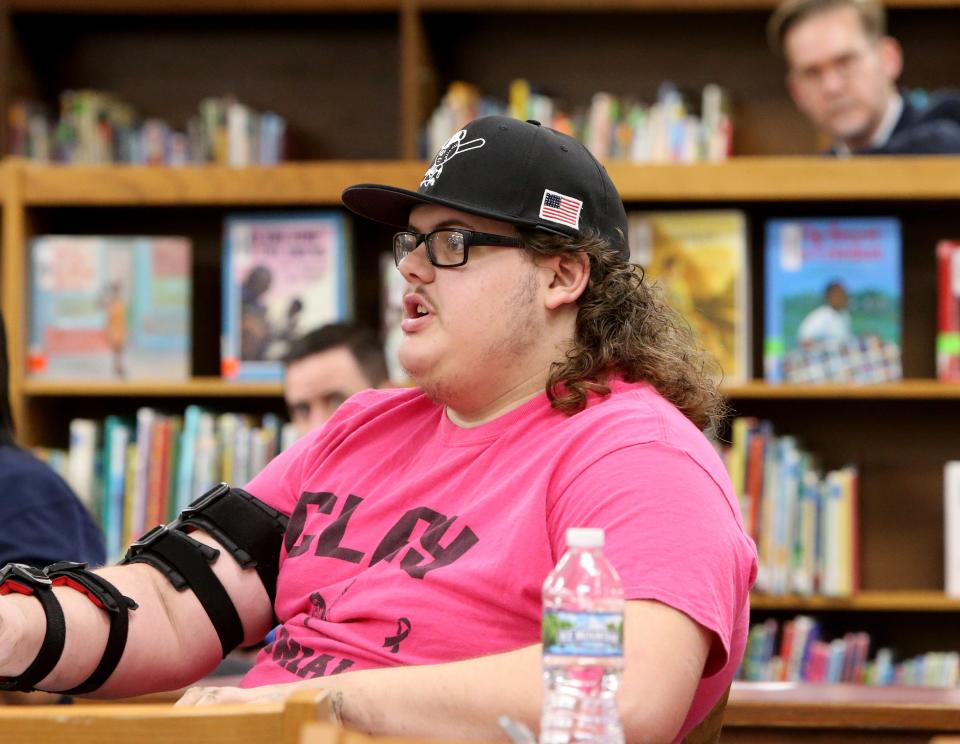
Why consider consolidation?
His feelings were echoed by some of the hundreds of other students, parents, teachers and community members who showed up to a series of meetings last week to learn more about South Bend schools’ plans for consolidation.
Consultants working for the district presented a broad set of ideas for how to redirect student assignments in a way that would help the South Bend school district better balance enrollment as students continue to leave for other area districts, charters and private schools.
The corporation has lost more than 4,000 students over the last decade and with it, tens of millions of dollars in state education funding.
That reality — along with the evolution of several popular magnet programs, open to families across the district regardless of where they live — has created an imbalance in student enrollment. While eight of the district’s 15 elementary schools are under-enrolled, others like Harrison, Madison and McKinley are above 100% capacity. Middle and high schools see similar disparities in enrollment. Only one of four high schools has enrollment at more than 60% of its capacity.
To solve for this, planners say, the district could consider closing a high school, like Clay, converting Riley to a middle school, or reconfiguring school feeder patterns in a way that moderates enrollment practices and keeps students closer to their regional schools. That approach would likely require recreating or moveing certain school programs.
Consultants say they envision popular high school magnets would stay open, but could change location based on what consolidation methods the South Bend school board prefers.
Other K-8 options, like traditional schools and Marquette’s Montessori program, are likely to continue, but the status of some dual language, fine arts and STEAM offerings do not appear guaranteed.
Facility planners, however, have stressed that ideas presented last week are simply that. Formal recommendations are not expected to come to until March, and a final school board vote is not expected until April.
Once decided, planners say, no changes would occur until at least the 2024-2025 school year and a phased-in approach would likely apply to any relocated programs or school mergers.
Any changes the school board considers in redistricting would also have to meet the parameters of a 40-year-old consent decree overseen by the U.S. Department of Justice.
The decree, also known as a desegregation order, stipulates that each school in the corporation enroll a percentage of Black students that’s within 15 percentage points of the overall Black student population of the district, meaning administrators must draw student enrollment lines that ensure diverse school populations across the district.
Facilities planners say they have reviewed initial proposals for compliance with the decree and will continue to do so as additional ideas take shape.
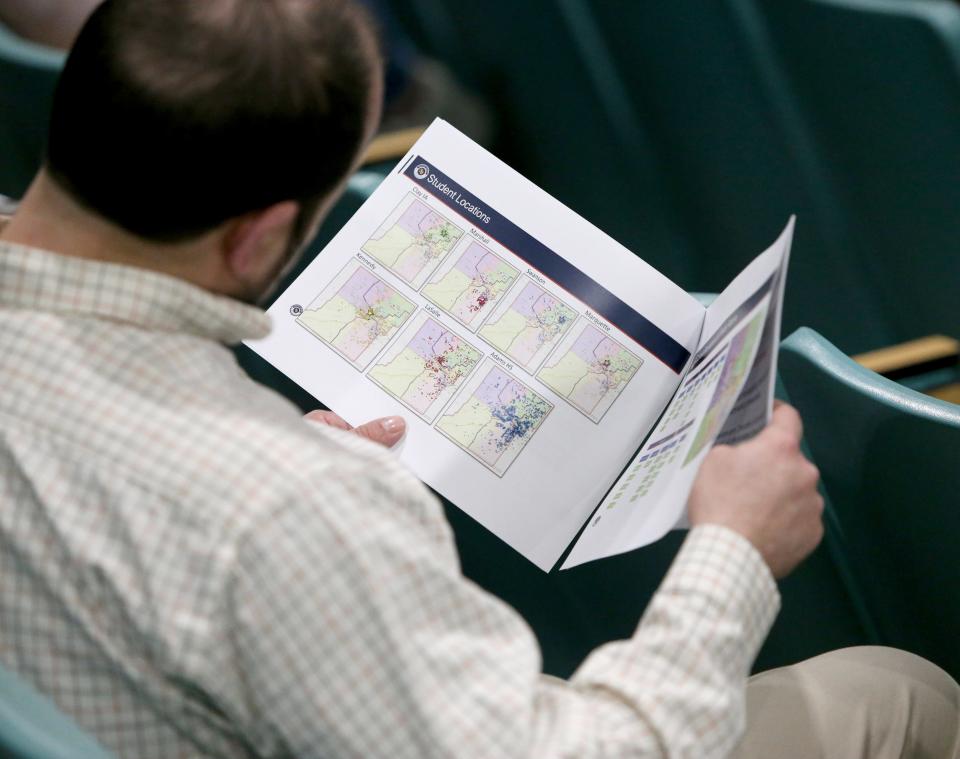
Proposed new law amps up pressure
Added pressure also came last week as state lawmakers considered a bill brought by Sen. Linda Rogers of Granger that establishes enrollment thresholds for school closures.
Should the legislation pass this spring, the state could intervene and close schools that are not enrolled at more than 60% of their capacity. Those schools would then be offered to interested charter schools to buy or lease for $1 — a mechanism that already exists today for buildings closed by a local school board.
The South Bend district currently has eight buildings that fall under the 60% threshold and parents say they are already wary of what the existing “$1 law” means for the future of their neighborhood should the district decide to close Clay.
“A lot of this has been driven by the legislature,” said Linda Lucy, president of the corporation’s teachers union, NEA-South Bend. “They’re now trying to make it easier for charter schools to push the envelope to take our schools for $1.”
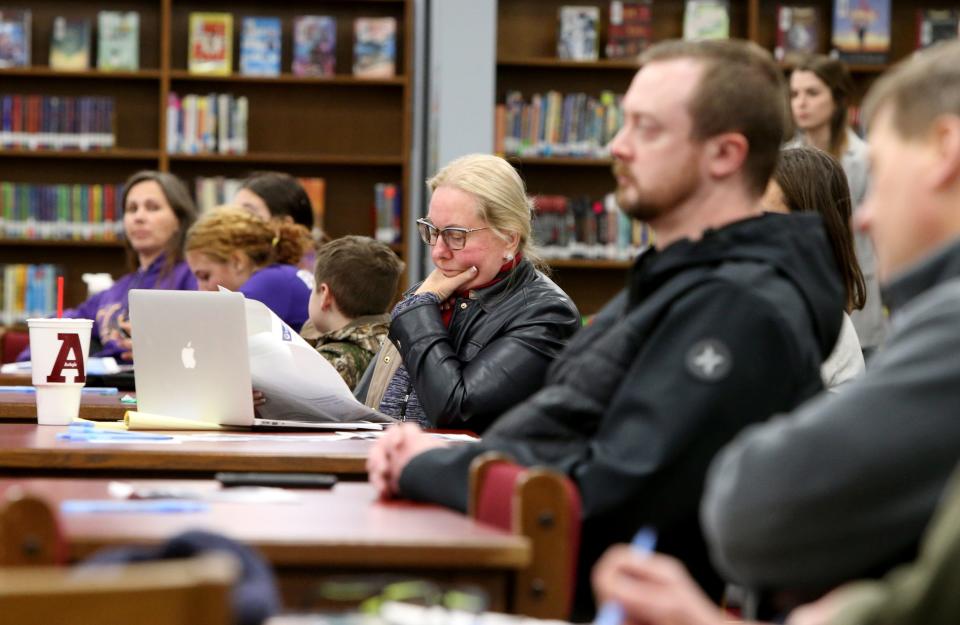
By closing some schools and consolidating others, some say the district could be vulnerable to charter competition but also clashes in school culture.
While some expressed concern grouping kids as young as kindergarteners with pre-teens on buses under the idea of a K-8 academy, others fear fights among high schoolers could escalate should consolidation come among older students.
Rather than closing schools, many in meetings last week said they would like to see investments in existing programs, such as a recommendation last summer to reconfigure Washington High School classrooms into bigger, more flexible lab space serving the district’s medical magnet program. They see it as an opportunity to increase enrollment by building upon what the corporation does well.
A common concern among the Clay community is a feeling that the district has invested money over the years in other schools with programmatic themes — like Adams High School’s International Baccalaureate track — while allowing Clay’s specialty courses to fall behind. Some are now questioning if that was a part of the district’s plan all along.
“I get emotional because this is not what it used to be like,” said Katie Rodriguez, coach of the Clay High School softball team. “But, you don’t get that feeling anymore because, you guys, with these numbers, it looks like it’s Adams and the three red-headed stepchildren after that.”
A few, like ABC57 meteorologist Tom Coomes, attending a meeting last week out of personal interest, expressed support for a two-high-school system, an option seen as potentially advantageous in creating more competitive sports programs and making specialized classes more accessible to a broader range of students.
Others said they felt the district should keep four high schools and take more time to speak directly to parents about why they’ve made their school choice. Changes now, some parents say, feel reminiscent of the district's consolidation efforts in 2018.
"Paying these big companies that aren't here all the time and changing (the district) every five years isn't the solution," said Alicia Alkire, who sends her first-grader to Swanson Traditional School. "I think the bottom line is really finding out why kids are coming or leaving."
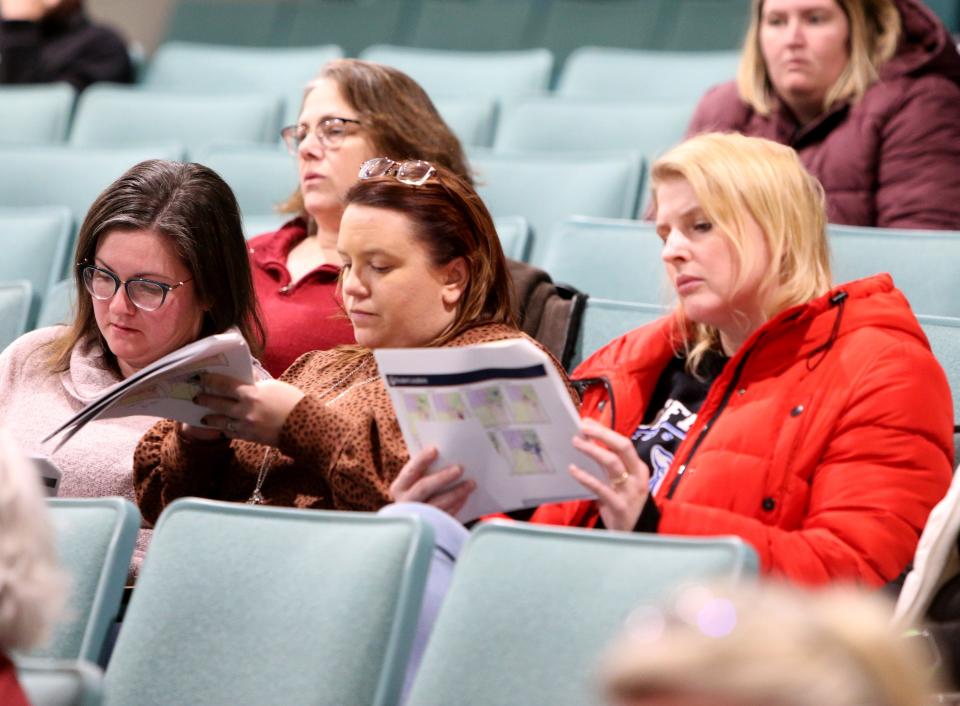
South Bend schools seeking feedback
Planners say they embrace any and all feedback on the plans and see regional school boundaries as a way to strengthen feeder programs, streamline transportation services, and reinvest dollars into the classroom.
Operational cost savings could come anywhere between $600K to $2.1M a year, depending on what ideas the school board chooses to pursue. Although, many of the planners’ suggestions will require investment in buildings — especially if they are assigned different grade configurations — and those totals have not been budgeted yet.
Consultants say they need to narrow their focus on what specific projects the district hopes to pursue before calculating that cost.
South Bend officials said they would dedicate $34 million to "right-sizing the district" as a part of their 2020 referendum campaign. Planners say addressing all deferred maintenance needs in a districtwide consolidation plan could take anywhere from $240 million to $300 million over 20 to 30 years.
What the board does and doesn’t pursue could set the stage for the future of South Bend education. Too much change could force families, wary of past consolidation efforts, out of the district. Not enough change could mean continued financial challenges forcing the district to return to the community with future recommendations.
Many expressed support for redrawing district lines in a way that connects students more closely to their neighborhood schools. Some, however, expressed reservations about what that would mean for students already attending districtwide choice programs far from their regional schools.
Alkire, who has two younger children not yet school-aged, says she's now contemplating other schools in the area. A teacher for seven years, she says she values consistency in her children's education.
"I chose Swanson because of the program it was," Alkire said. "This (process) has validated my feelings that I had in the beginning of why I didn't want to send (my daughter) to South Bend schools. We just change thing after change thing every five years hoping to solve a problem, but we're not really solving the problem."
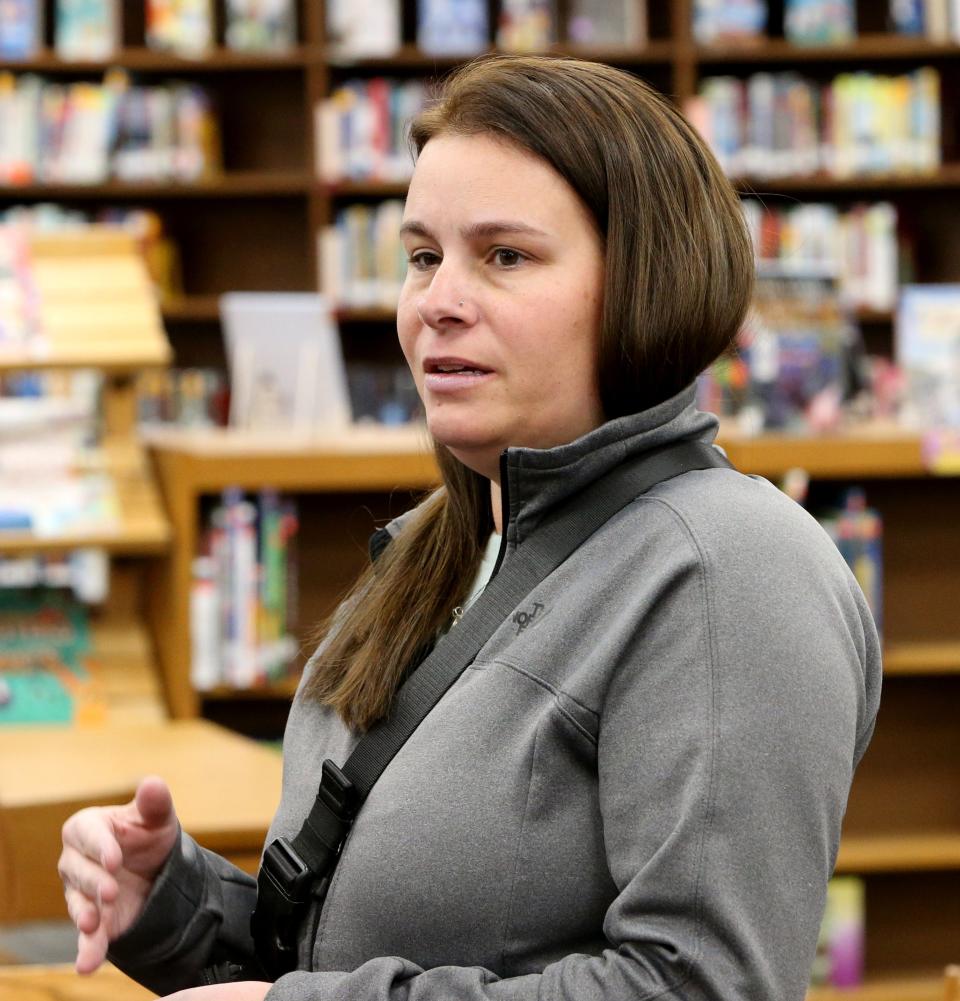
Planners have made clear that regardless of the options advanced into the future, change will take time and students currently enrolled in school-specific programs may be given the opportunity to finish within that program if assigned to a different school. Teachers are also likely to retain a place in the district even if their school or program changes.
District leaders and planners emphasize that at this point in facility planning, they're most interested in hearing from the community. The district had received more than 800 responses by Wednesday to a districtwide survey.
"No decision has ever been made on anything, because we want to hear from you," new school board member Mark Costello stressed to community members Wednesday night. "I'm here tonight listening, trying to see what you want."
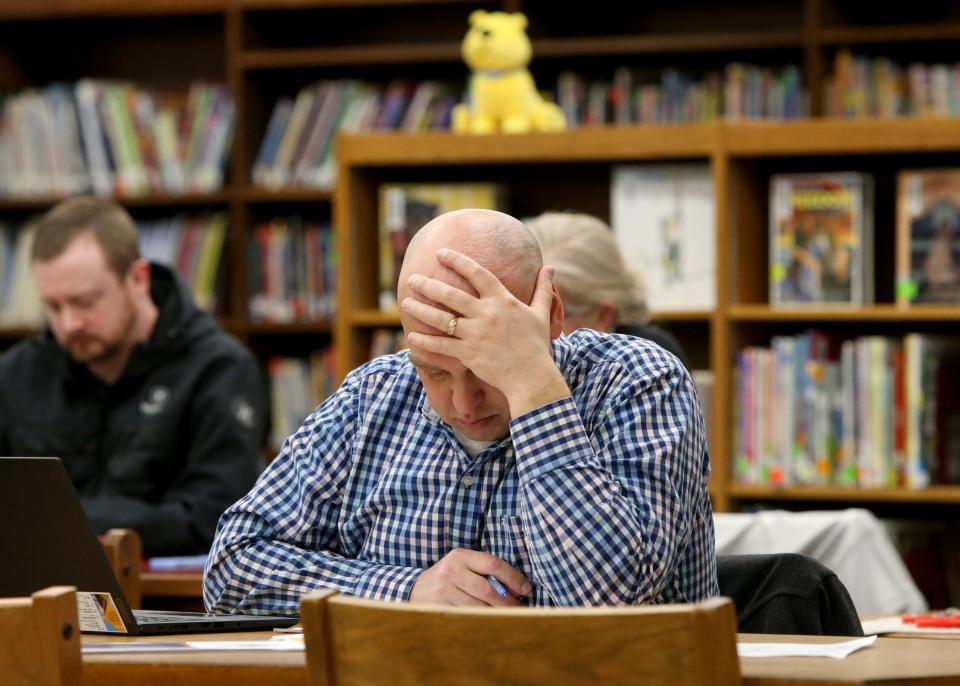
How to share your ideas
The district has scheduled multiple opportunities for public input between giving an initial school board presentation in early February and making their final recommendations in late March.
Ongoing: Community survey seeking input on facility planners' proposed scenarios. The survey can be accessed through the South Bend district's website.
Feb. 13-17: Planners will schedule small group, virtual community meetings during this window. Interested community members can register through the online survey launched Monday.
March 6-10: The district’s facility planning task force will meet during this week. An exact date and time are forthcoming.
March 20: Planners will give their final recommendations to the school board in its regularly scheduled meeting at 5:30 p.m. at Clay High School.
April 17: A final vote is expected at the district's mid-April school board meeting at 5:30 p.m. at the administration building.
Tribune reporter Jordan Smith contributed to this story.
Email South Bend Tribune education reporter Carley Lanich at clanich@gannett.com. Follow her on Twitter: @carleylanich.
This article originally appeared on South Bend Tribune: What does public school consolidation mean for South Bend?

